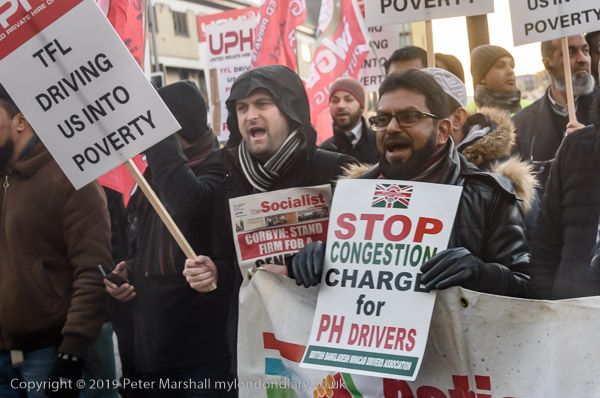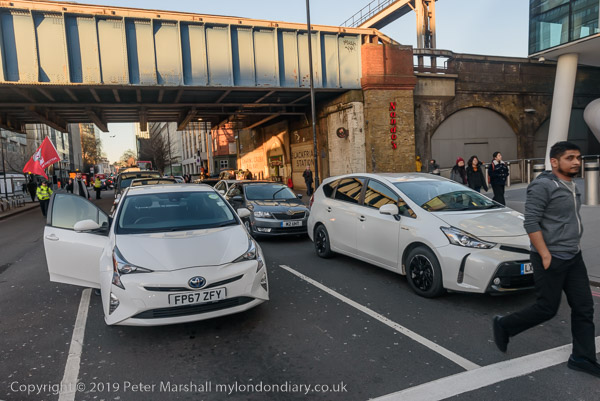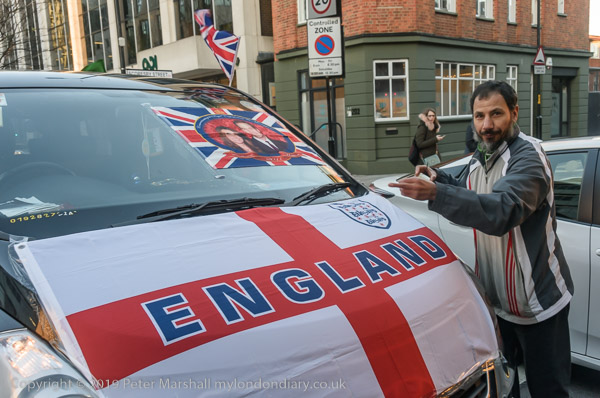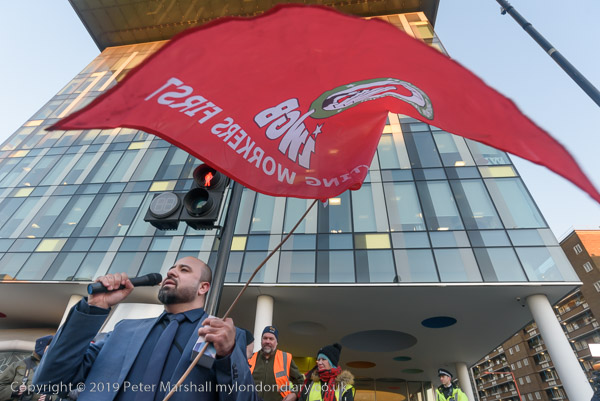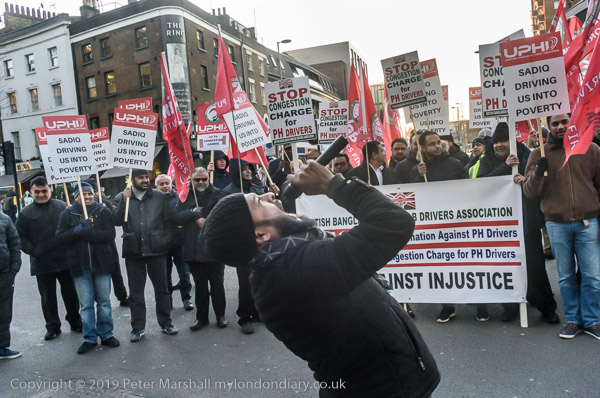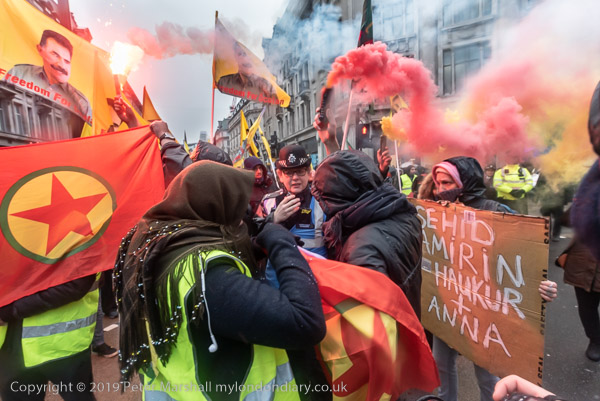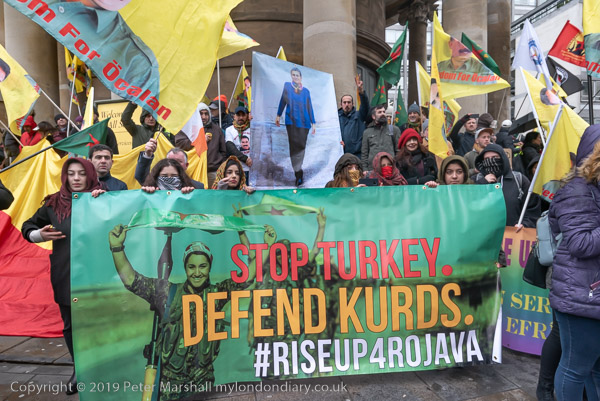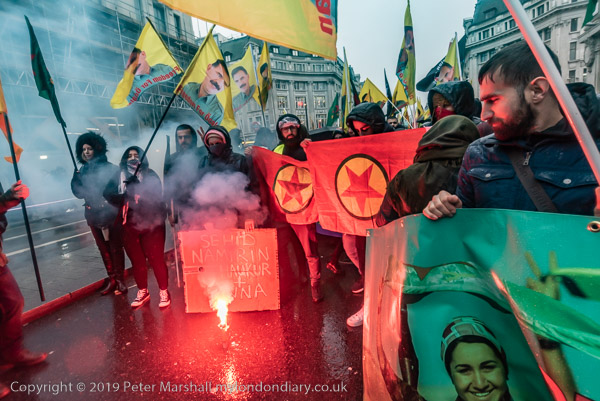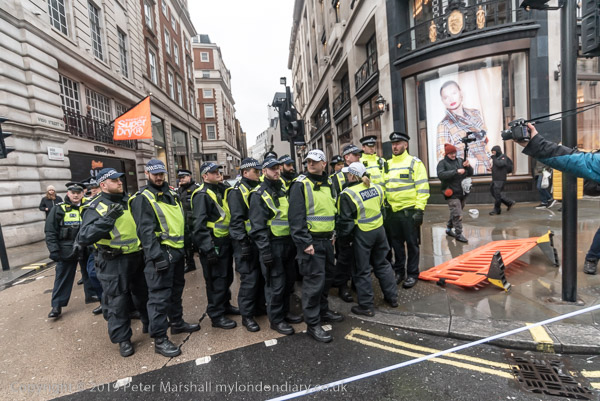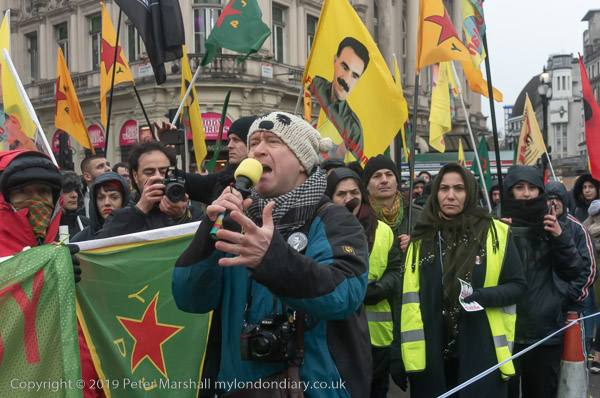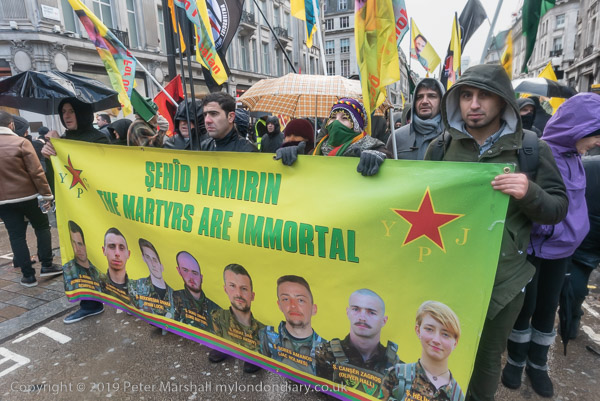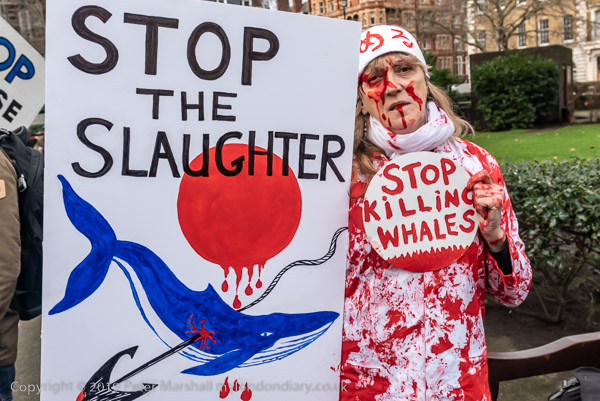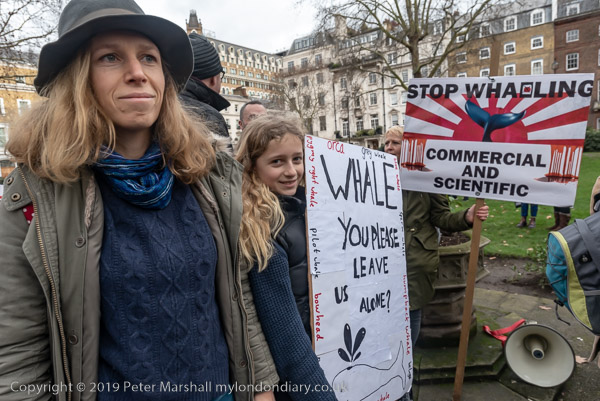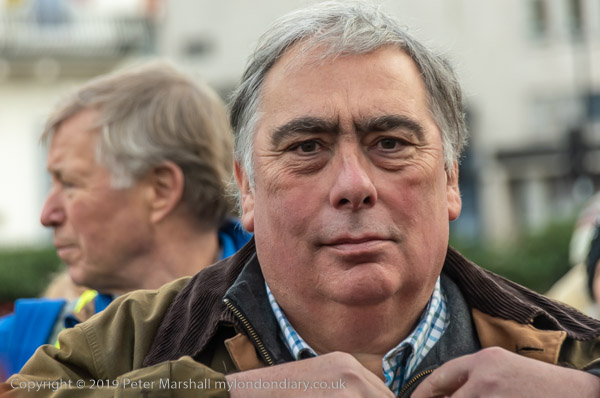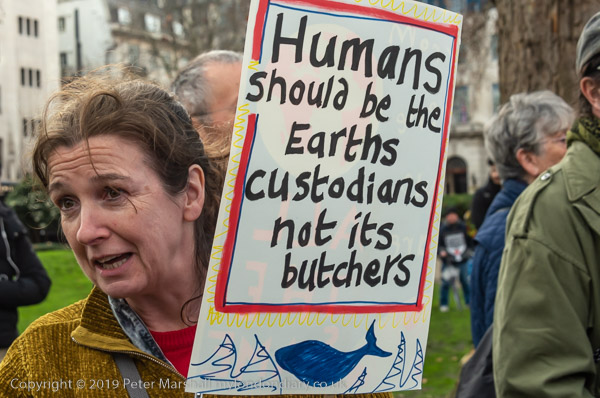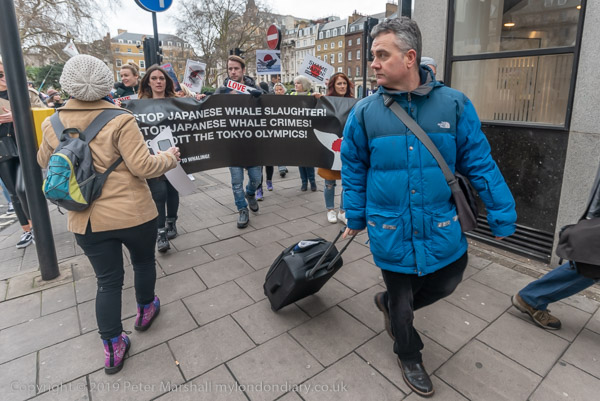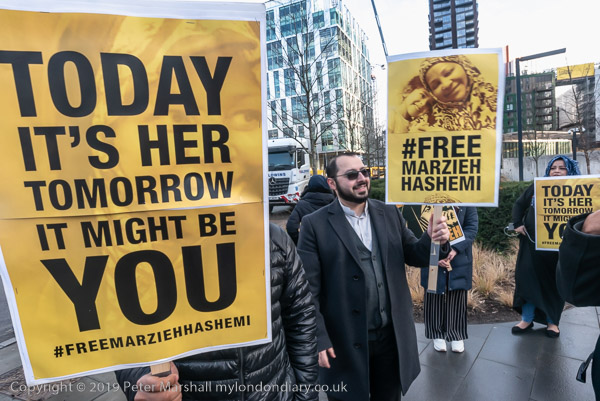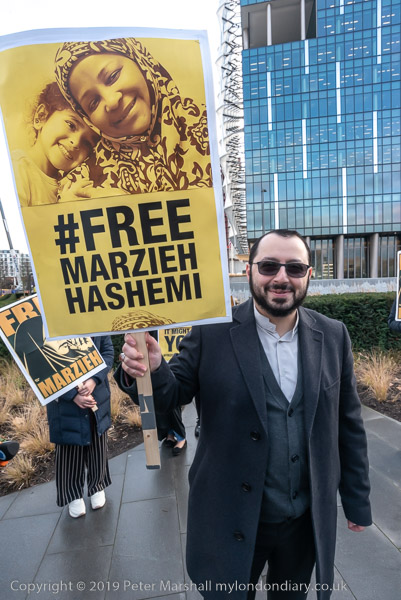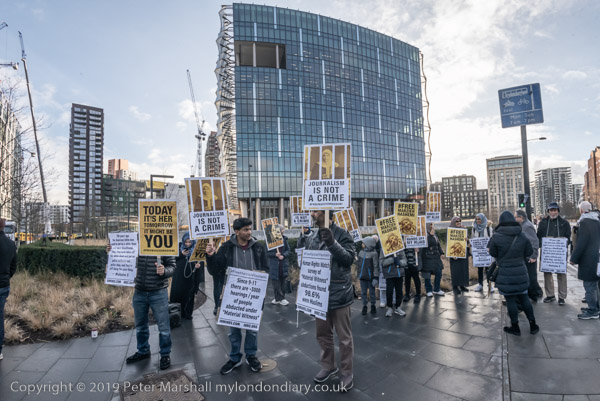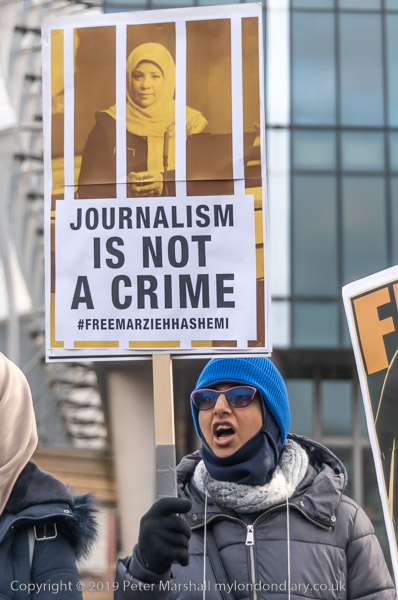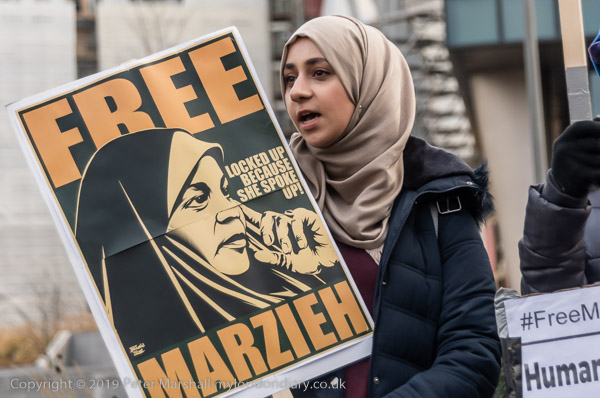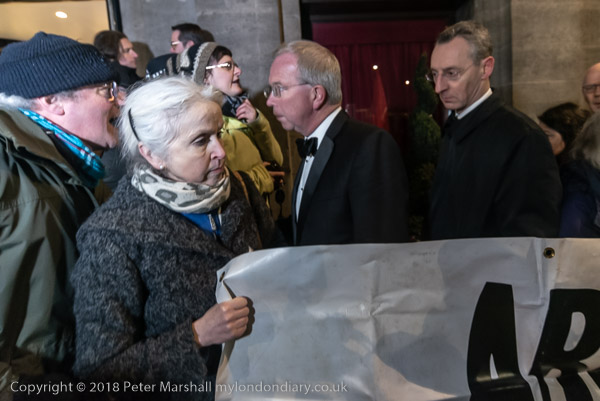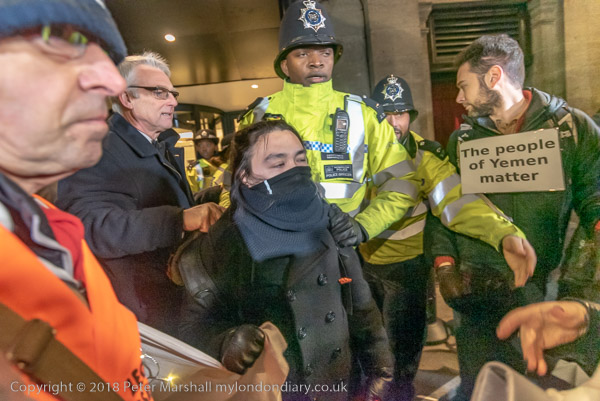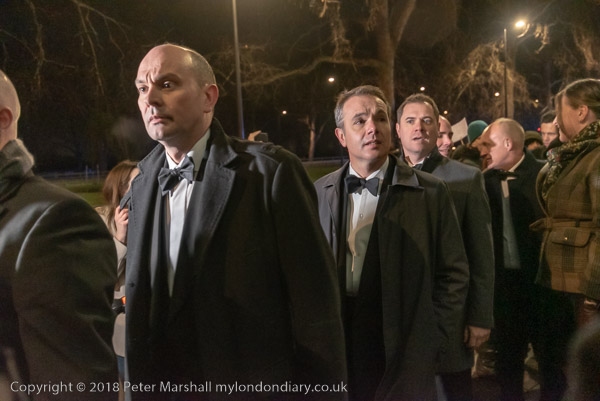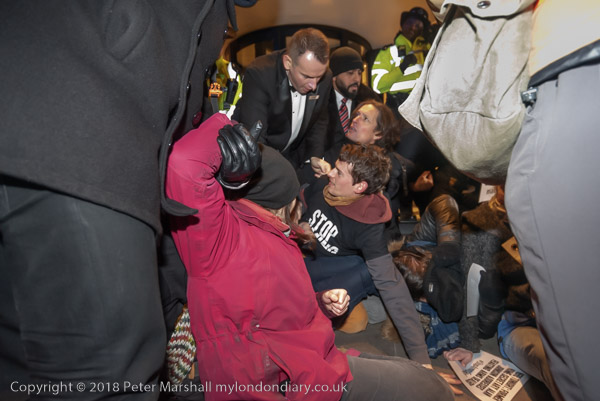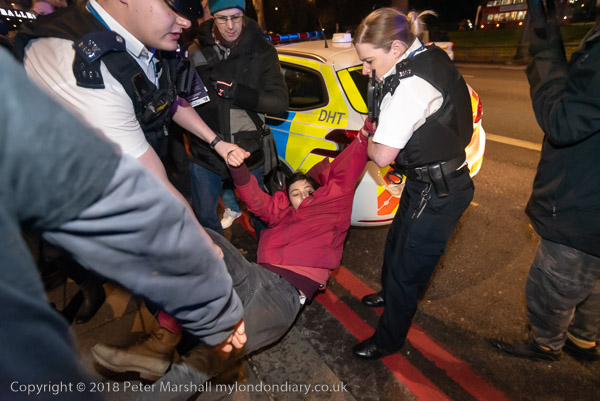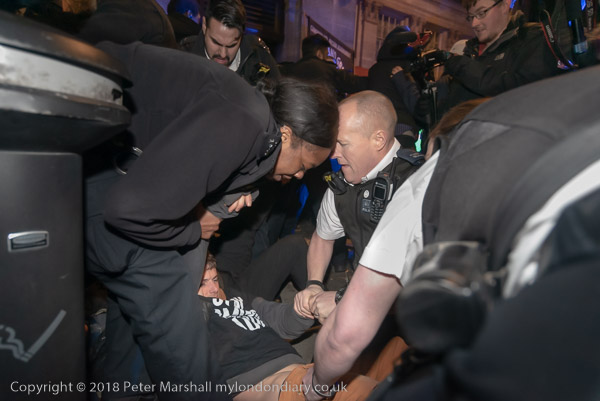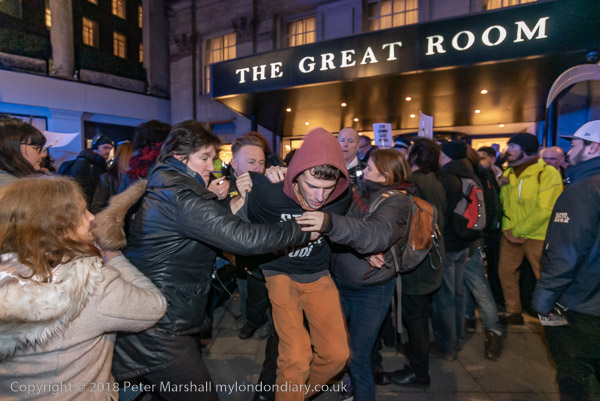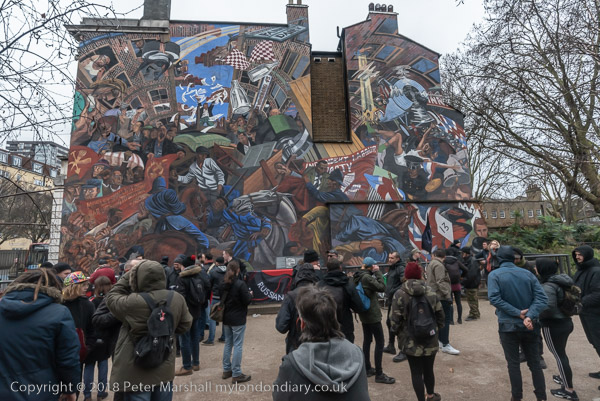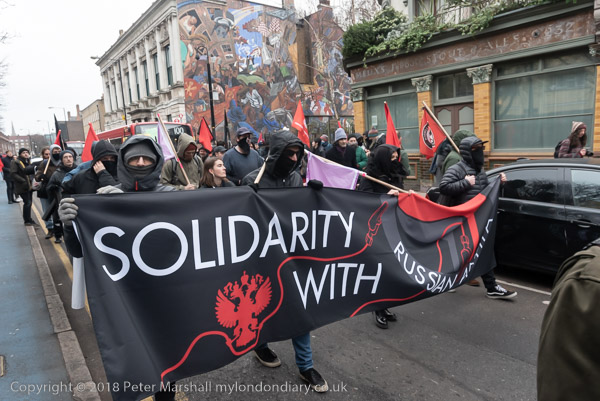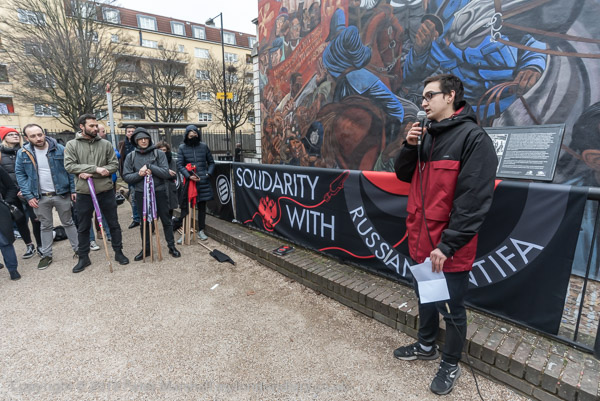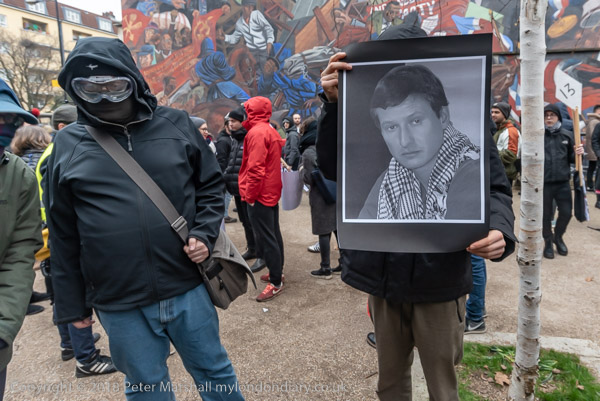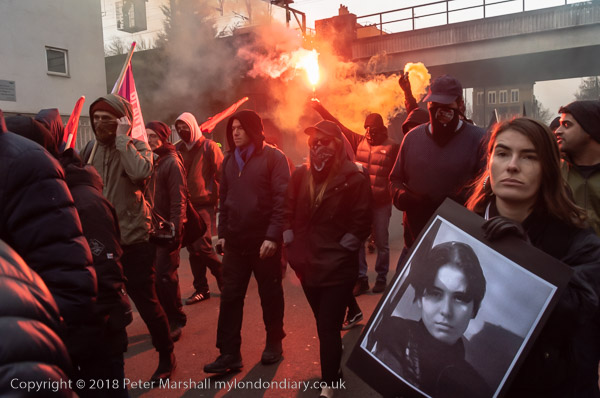Continuing the series of posts showing work taken in London in 1979 as posted to Facebook with comments an image at a time in the first half of 2018.
Previous post in London 1979 series
______________________________________________________
London Photographs 1979 – Peter Marshall
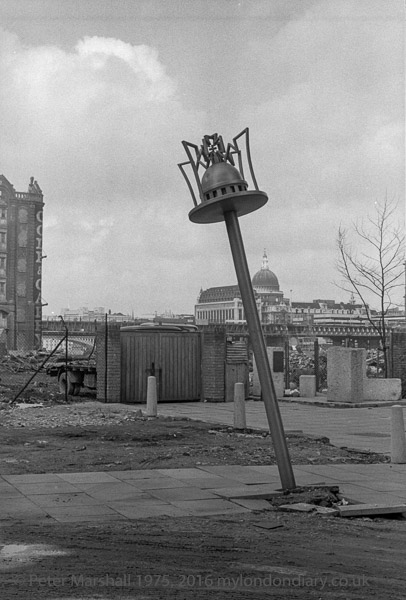
Jubilee Walk marker post, Southwark, 1979
19i-23: warehouse,St Paul’s Cathedral, bridge, wharf
The drunken marker post was a little to the north of Southwark Cathedral, just north of Montague Place, where there is still an open area on the riverside with a river view, though from where I took this picture now blocked by the modern office building which replaced West Kent Wharf and a part of Hibernia Wharves which had recently been demolished when I made this picture.
At top left you can see the riverside corner of St Mary Overy Wharf, with its decorative balustrade, and in giant letters the name of its occupiers from 1890 for the rest of its working life as a wharf, Cole & Carey.
Beyond the Cannon St rail bridge you can see some of the buildings of London, including of course St Paul’s Cathedral.
The Silver Jubilee Walkway, opened by the Queen in 1977 was renamed the Jubilee Walkway and refurbished in 2002. The 15 mile walk is now marked by plaques in the pavement and I think few if any of these original marker posts remain. It has been divided into five shorter lengths suitable for tourists.
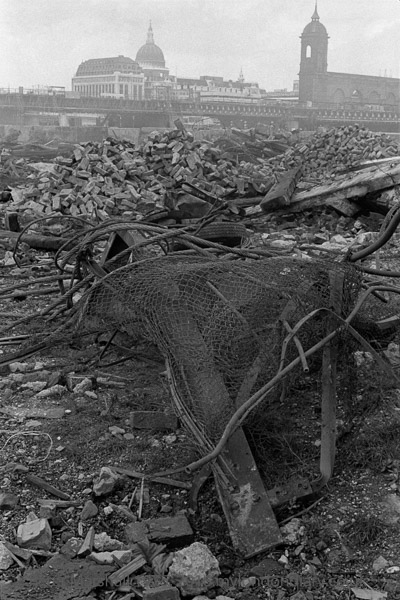
Demolition West Kent & Hibernia Wharves, Southwark, 1979
19i-33: rubble, St Paul’s Cathedral, bridge, wharf, Hibernia, West Kent
Hibernia Wharf, built in 1838 was greatly extended 1858-61. It later became part of the property of The Proprietors of Hay’s Wharf who used it as a cold store until around 1968. A small part of the facade on London Bridge was retained and built into a company hall for the Worshipful Companies of Launderers, Glaziers and Scientific Instrument Makers, a late replacement for their Glaziers Hall burnt down in the Great Fire of 1666.
This was I think one of a number of pictures of the area (including some others already posted here) in a small one-person show on Southwark’s riverside I had in the Barge House, behind the OXO tower, no great distance from where the picture was taken. Although the show was small, the pictures were large, printed A0, and worked surprisingly well for 35mm at that size. Later I took some of those prints, along with other smaller prints I had made from elsewhere for a show of London’s Industrial History.
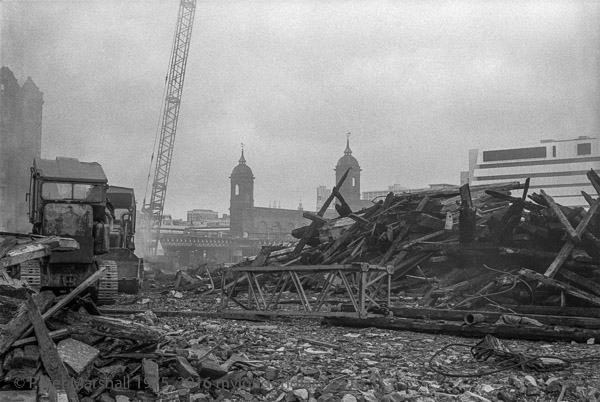
Demolition West Kent & Hibernia Wharves, Southwark, 1979
19i-41: rubble, Cannon St, bridge, wharf, Hibernia,
A huge pile of timbers from the wharves was burning on the demolition site. At left through a little smoke is St Mary Overy Wharf and across the river you can see Cannon St Station and Mondial House, then Europe’s largest international telecommunications complex. Planned in 1970 to open in 1972, it was years late in completion. Built with upper storeys stepped back to ensure it didn’t obstruct views of St Paul’s Cathedral and with a maximum height of 46m it had 4 floors below ground in addition to the 8 above.
In 2006 UBS was granted permission to demolish Mondial House to build its huge Watermark Place project with 545 000 sq ft of office and retail space. 1 Angel Lane is now occupied by Japanese investment bank Nomura International.
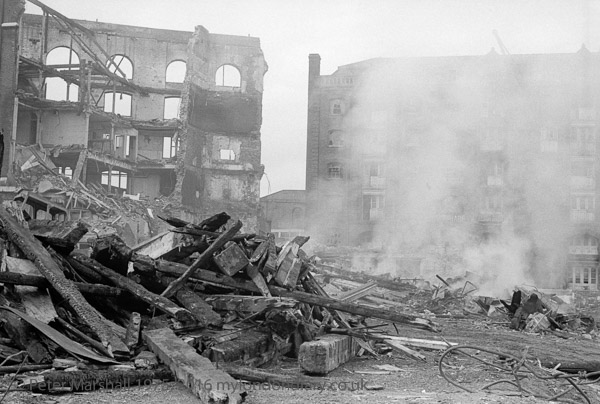
Demolition West Kent & Hibernia Wharves, Southwark, 1979
19i-46: rubble, Cannon St, bridge, wharf, Hibernia,
Another image from the demolition of West Kent & Hibernia Wharf. The building still standing behind the smoke at right is St Mary Overy Wharf.
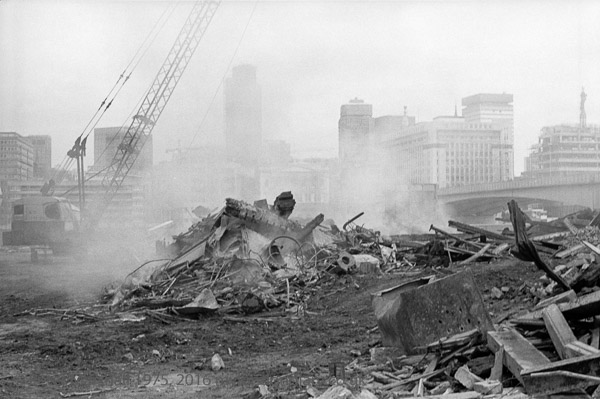
Demolition of Hibernia Wharf, Southwark, 1979
19i-54: rubble,St Mary Overy, bridge, wharf, office, crane,
Further east on the demolition site, with London Bridge and Adelaide house visible through the smoke. Near the centre is the NatWest tower, constructed for the National Westminster Bank and occupied by them between 1980 and 1993, Richard Seifert managed to change the London building guidelines to erect the first extremely tall building in the City, 183m high and 47 floors, it was the tallest building in London until 1 Canada Square was built in 1990, and the tallest in the city until the Heron tower in 2009.
It was only actually completed almost ten years late after NatWest moved out; and its design from the air was supposed to resemble the NatWest logo. In 1993 it was severely damaged by IRA bomb and needed to be externally re-clad and internally refurbished, costing £75 million. NatWest decided not to move back in and sold it to UK property company Greycoat, who renamed it Tower 42 in 1995, the name a reference to the 42 upper stories which are cantilevered out from the base.
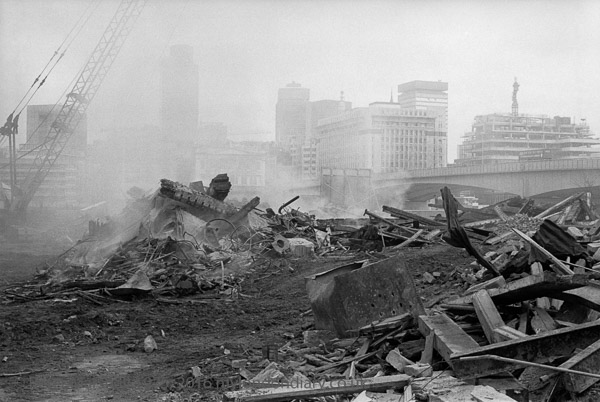
Demolition at Hibernia wharf, Southwark, 1979
19i-55: rubble,St Mary Overy, bridge, wharf, office, crane,
Another picture from a similar viewpoint
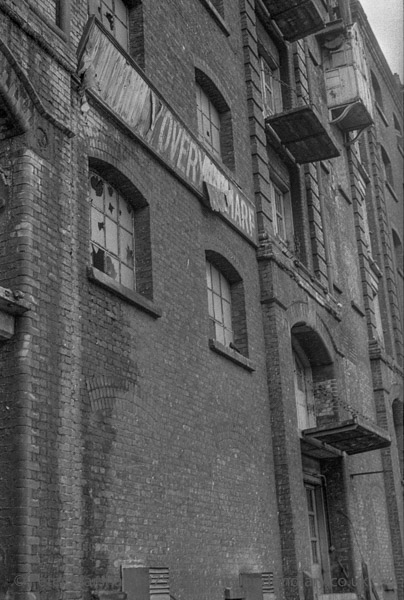
St Mary Overy wharf, Southwark, 1979
19i-65:wharf, office, crane,
Still standing in 1979, St Mary Overy Wharf was soon to be demolished and replaced by some rather dull buildings of roughly similar mass but with little detailing or individuality. It seems a shame that at least this facade was not retained.
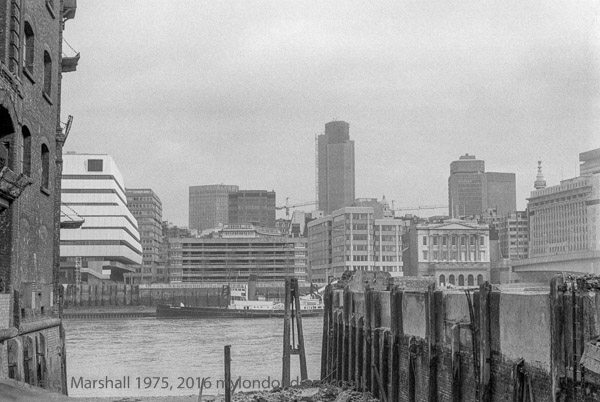
St Mary Overy dock and River Thames, Southwark, 1979
19i-66:wharf, dock, river, offices, monument
There is still a dock here, now with a replica of Sir Francis Drake’s Golden Hinde, built in Appeldore and launched in 1973, since when she has been sailed around the world and on various other voyages before ending up- here as a tourist attraction.
I’m not sure the dock is in exactly the same place, and I think the mouth at least is rather narrower. The wharf on the left has now also gone, with its replacement set further back to provide a pedestrianised area and a beer garden at the riverside.
______________________________________________________
More to follow shortly
Previous post in London 1979 series
______________________________________________________
The pictures in this series of posts are exactly those on London Photographs, where landscape format images display slightly larger. Clicking on any picture will go to the page with it on the web site.
I have included the file number and some keywords in the captions; you can order a print of any picture on this site using the file number.
Order details and prices
______________________________________________________
There are no adverts on this site and it receives no sponsorship, and I like to keep it that way. But it does take a considerable amount of my time and thought, and if you enjoy reading it, a small donation – perhaps the cost of a beer – would be appreciated.
My London Diary : London Photos : Hull : River Lea/Lee Valley : London’s Industrial Heritage
All photographs on this and my other sites, unless otherwise stated, are taken by and copyright of Peter Marshall, and are available for reproduction or can be bought as prints.
To order prints or reproduce images
________________________________________________________
